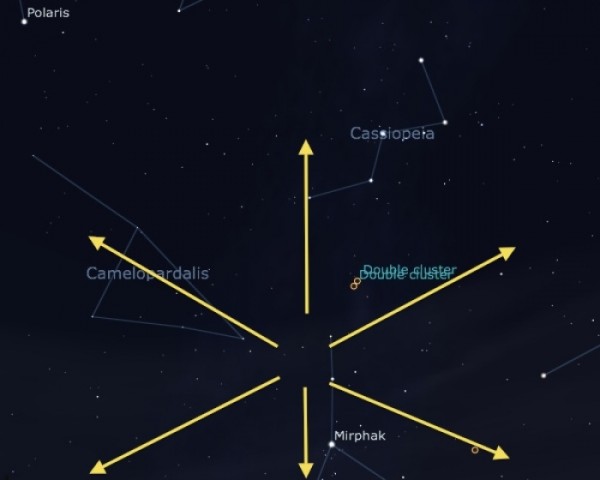"I’m a shooting star. A meteor shower. But I’m not going to die out. I guess I’m more like a comet then. I’m just going to keep on coming back.” -C. JoyBell C.
Every year, meteor showers sizzle and fizzle, yet no matter what happens in the skies, there's always one meteor shower that's reliable for a good show: the Perseids. After sunset tonight (and for about the next week) in the skies, they'll delight skywatchers across the globe.
 Image credit: created by me using Stellarium, available free at http://stellarium.org/.
Image credit: created by me using Stellarium, available free at http://stellarium.org/.
Have you ever wondered where these (or any) meteors come from? If you're like most people, you're probably going to blame the tails of comets that have come in-and-out of the Solar System. That's close, but it's not quite right!
 Image credit: Gehrz, R. D., Reach, W. T., Woodward, C. E., and Kelley, M. S., 2006, of the trail of Comet Encke.
Image credit: Gehrz, R. D., Reach, W. T., Woodward, C. E., and Kelley, M. S., 2006, of the trail of Comet Encke.
Come find out how to locate the meteors you've been waiting all year for, and their origin, here!

Great post Ethan. Can you also let us Aussies know where to look too?
samuel@bdell ~ $ units
You have: 100milligrams (400000mph)^2
You want: pounds tnt
* 1.5284494
/ 0.65425783
So, a 100mg metor at 40,000MPH has the kinetic energy equivalent of about 1.5 Pounds of TNT (or, a few sticks of dynamite)
This is a great explanation with awesome photos. Thanks so much for the wonderful description of meteor showers - simply explained. I'll share this with our astronomy club.